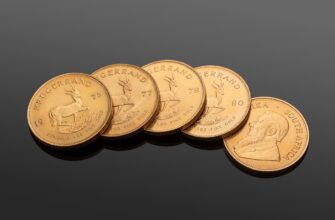- How to Guard Your Crypto Wallet Safely: 9 Essential Security Steps
- 1. Choose Your Wallet Wisely
- 2. Fortify Your Seed Phrase Protection
- 3. Implement Military-Grade Passwords
- 4. Activate Multi-Factor Authentication (2FA)
- 5. Maintain Software Vigilance
- 6. Master Transaction Verification
- 7. Secure Your Physical Environment
- 8. Implement Multi-Signature Protection
- 9. Conduct Regular Security Audits
- Crypto Wallet Security FAQ
How to Guard Your Crypto Wallet Safely: 9 Essential Security Steps
With cryptocurrency thefts exceeding $3.8 billion in 2022 alone, securing your digital assets has never been more critical. Your crypto wallet is the gateway to your financial future – and protecting it requires more than just a password. This comprehensive guide reveals professional strategies to shield your cryptocurrency from hackers, scams, and human error.
1. Choose Your Wallet Wisely
Not all wallets offer equal protection. Your first security decision is selecting the right type:
- Hardware Wallets (Cold Storage): Physical devices like Ledger or Trezor that store keys offline. Most secure for long-term holdings.
- Software Wallets (Hot Wallets): Mobile/desktop apps (e.g., Exodus, Trust Wallet). Convenient for frequent transactions but more vulnerable.
- Paper Wallets: Physical printouts of keys. Immune to hacking but susceptible to physical damage.
Prioritize open-source wallets with regular security audits. Avoid web-based wallets for significant holdings.
2. Fortify Your Seed Phrase Protection
Your 12-24 word recovery phrase is the master key to your crypto. Protect it like your life depends on it:
- Never store digitally: Avoid photos, cloud backups, or text files
- Use fire/water-resistant metal plates for physical storage
- Split phrase using Shamir’s Secret Sharing (divide among multiple locations)
- Memorize at least 50% of the phrase as backup
Treat anyone asking for your seed phrase as a thief – legitimate services never request it.
3. Implement Military-Grade Passwords
Weak passwords cause 81% of hacking-related thefts. Create uncrackable credentials:
- Minimum 16 characters with upper/lower case, numbers, symbols
- Never reuse passwords across platforms
- Use password managers (Bitwarden, KeePass) instead of browser storage
- Change passwords quarterly
4. Activate Multi-Factor Authentication (2FA)
Add critical secondary verification beyond passwords:
- Authenticator apps (Google/Microsoft Authenticator) – more secure than SMS
- Hardware security keys (YubiKey) for phishing-resistant protection
- Biometric verification where available
Never share 2FA codes, and always have backup methods configured.
5. Maintain Software Vigilance
Outdated software is hackers’ favorite entry point:
- Enable automatic wallet updates
- Update operating systems monthly
- Install antivirus software with real-time scanning
- Remove unused browser extensions
6. Master Transaction Verification
Prevent address poisoning and malicious redirects:
- Always verify the first/last 4 characters of wallet addresses
- Use wallet aliases for frequent transactions
- Check contract addresses on Etherscan before token approvals
- Enable transaction preview features in your wallet
7. Secure Your Physical Environment
Real-world threats matter too:
- Use privacy screens when accessing wallets in public
- Never use public Wi-Fi for crypto transactions
- Store hardware wallets in fireproof safes
- Install home security systems with motion sensors
8. Implement Multi-Signature Protection
For significant holdings, require multiple approvals for transactions:
- Set up 3-of-5 signature schemes
- Store signing devices in separate geographical locations
- Use institutional-grade custodians for $100k+ portfolios
9. Conduct Regular Security Audits
Proactively find vulnerabilities:
- Monthly wallet permission checks (revoke unused dApp access)
- Quarterly password rotations
- Annual hardware wallet firmware verification
- Monitor blockchain explorers for suspicious activity
Crypto Wallet Security FAQ
Q: Can my crypto be stolen if I have a hardware wallet?
A> Yes, if you approve malicious transactions or expose your seed phrase. Hardware wallets prevent remote hacking but can’t stop user error.
Q: How often should I check my wallet security?
A> Perform quick checks weekly (transaction history), full audits monthly, and comprehensive reviews quarterly.
Q: Are biometric logins safe for crypto wallets?
A> Fingerprint/face ID provides good convenience security but should always be paired with a strong password as backup.
Q: What’s the biggest security mistake crypto users make?
A> Storing seed phrases digitally (especially in cloud notes or photos) – responsible for 63% of preventable losses.
Q: Should I use VPNs for crypto transactions?
A> Yes, reputable VPNs add crucial encryption on public networks, but avoid free VPN services which may log data.
Implementing these nine security layers creates a formidable defense system for your cryptocurrency. Remember: In the blockchain world, you are your own bank – and security is a continuous process, not a one-time setup. Stay vigilant, stay updated, and never let convenience compromise your crypto’s safety.








